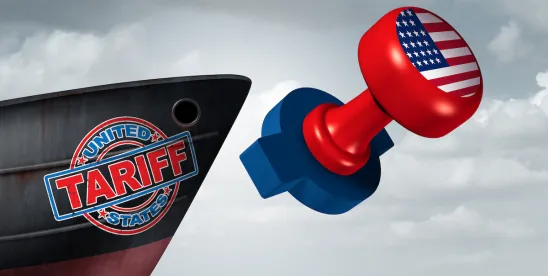Donald Trump’s reelection as president of the United States raises considerations for both U.S. and non-U.S. companies importing goods into the country. Specifically, given Trump’s plan to impose “universal baseline tariffs on most foreign products” to “reward[] domestic production while taxing foreign companies,” what tariffs will be imposed, and what can importers do to protect themselves from the increased financial burden tariffs create? After Trump takes office on Jan. 20, 2025, supply chains most likely will be more expensive, with any additional tariffs likely impacting U.S. retailers, wholesalers, and manufacturers. During the campaign, Trump announced he would impose an additional 10-20% on global products and an additional 60% on products of China. Presidents have broad authority to impose tariffs and there are numerous legal authorities the Trump administration can rely on to impose them. In this GT Alert, we address those statutes and discuss strategies importers should consider to protect themselves from the increased financial burden. Statutory legal authority includes:
- International Emergency Economic Powers Act of 1977 (IEEPA) provides the president with the authority to address unusual and extraordinary threats to national security through economic sanctions. According to the IEEPA, “Any authority granted to the President by section 1702 of this title may be exercised to deal with any unusual and extraordinary threat . . . if the President declares a national emergency with respect to such threat.” President Trump may use this act to address U.S. trade deficits.
- Section 232 of the Trade Expansion Act of 1962 grants the president the power to impose restrictions on imports that pose a threat to national security, including through the imposition of tariffs. Previous legal challenges to the use of Section 232 have been unsuccessful.
- Section 301 of the Trade Act of 1974 allows the president to respond to foreign trade practices that disadvantage the United States, authorizing the executive to (1) impose duties or other import restrictions, (2) withdraw or suspend trade agreement concessions, or (3) enter into binding agreements with foreign governments to eliminate the conduct in question or provide compensation. In his first term, President Trump used Section 301 beginning in July 2018 to impose additional tariffs of 25% or 7.5% on four lists of products from China. To date, the tariffs are still in place.
- Section 338 of the Tariff Act of 1930 allows the president to impose additional tariffs of up to 50% on any country that discriminates against U.S. goods.
- Section 122 of the Trade Act of 1974 provides the president with a “balance of payments” authority, allowing the imposition of an additional 15% tariff on imports for 150 days “[w]henever fundamental international payments problems require special import measures to restrict imports—(1) to deal with large and serious United States balance-of-payments deficits, (2) to prevent an imminent and significant depreciation of the dollar in foreign exchange markets.”
Prior to the implementation of additional tariffs, U.S. companies should consider increasing visibility into their supply chains. Importers may wish to review each imported product and confirm its country of origin. Specifically, if an additional 10% is added to products of the European Union and 60% is added to products of China, and a purchase agreement states the country of origin is the EU, U.S. companies should consider confirming the bill of materials and production steps to ensure that the product is in fact manufactured in the EU and not merely assembled there.
In addition, U.S. importers should consider reviewing incoterms (international commercial terms) on all purchase orders to determine which party is responsible for the tariffs. Note that tariffs are assessed based on the date of entry of goods into the United States and not the purchase order date. If a U.S. importer and non-U.S. supplier are currently negotiating a master purchase agreement that will take effect between now and the implementation of new tariffs under the Trump administration, importers may wish to add language so that the purchase price does not include the additional duties at whatever date the goods enter the United States.
Finally, there are numerous duty-mitigation strategies importers can consider to potentially blunt the impact of increased costs, including the use of “first sale” in a multi-tier transaction. Imported merchandise may have been the subject of more than one sale, with the middleman buyer adding an amount for profit and expenses to the price paid by the U.S. importer at entry. For example, merchandise may be manufactured in China, sold to a middleman in Hong Kong, and then sold to a buyer/importer in the United States. Under certain circumstances, importers can declare the value of the goods on the “first” or earlier sale, rather than on the last one, thereby reducing the declared value of the goods upon which duty payments are based. In addition, importers may consider taking legal deductions from the declared value, such as foreign inland and international freight.
The implementation of tariffs in the Trump administration seems likely, although the specifics have yet to be disclosed. In the meantime, companies should consider increasing transparency into their global supply chains and employing duty-mitigation strategies.




 />i
/>i

